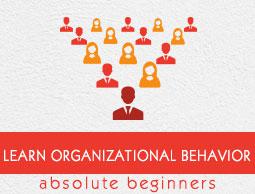Organizational Behavior - Concepts
The concept of OB is based on two key elements namely −
- Nature of people
- Nature of the organization
Nature of People
In simple words, nature of people is the basic qualities of a person, or the character that personifies an individual they can be similar or unique. Talking at the organizational level, some major factors affecting the nature of people have been highlighted. They are −
Individual Difference − It is the managerial approach towards each employee individually, that is one-on-one approach and not the statistical approach, that is, avoidance of single rule. Example− Manager should not be biased towards any particular employee rather should treat them equally and try not to judge anyone on any other factor apart from their work.
Perception − It is a unique ability to observe, listen and conclude something. It is believing in our senses. In short, the way we interpret things and have our point of view is our perception. Example − Aman thinks late night parties spoil youth while Anamika thinks late night parties are a way of making new friends. Here we see both Aman and Anamika have different perception about the same thing.
A whole person − As we all know that a person’s skill or brain cannot be employed we have to employee a whole person. Skill comes from background and knowledge. Our personal life cannot be totally separated from our work life, just like emotional conditions are not separable from physical conditions. So, people function is the functioning of a total human being not a specific feature of human being.
Motivated behavior − It is the behavior implanted or caused by some motivation from some person, group or even a situation. In an organization, we can see two different types of motivated employees −
Positive motivation − Encouraging others to change their behavior or say complete a task by luring them with promotions or any other profits. Example − “If you complete this, you will gain this.”
Negative motivation − Forcing or warning others to change their behavior else there can be serious consequences. Example − “If you don’t complete this, you will be deprived from the office.”
Value of person − Employees want to be valued and appreciated for their skills and abilities followed by opportunities which help them develop themselves.
Nature of Organization
Nature of organization states the motive of the firm. It is the opportunities it provides in the global market. It also defines the employees’ standard; in short, it defines the character of the company by acting as a mirror reflection of the company. We can understand the nature of any firm with its social system, the mutual interest it shares and the work ethics.
Let us take a quick look at all these factors −
Social system − Every organization socializes with other firms, their customers, or simply the outer world, and all of its employees - their own social roles and status. Their behavior is mainly influenced by their group as well as individual drives. Social system are of two types namely −
Formal − Groups formed by people working together in a firm or people that belong to the same club is considered as formal social system. Example − A success party after getting a project.
Informal − A group of friends, people socializing with others freely, enjoying, partying or chilling. Example − Birthday party.
Mutual interest − Every organization needs people and people need organizations to survive and prosper. Basically it’s a mutual understanding between the organization and the employees that helps both reach their respective objectives. Example − We deposit our money in the bank, in return the bank gives us loan, interest, etc.
Ethics − They are the moral principles of an individual, group, and organization. In order to attract and keep valuable employees, ethical treatment is necessary and some moral standards need to be set. In fact, companies are now establishing code of ethics training reward for notable ethical behavior.


